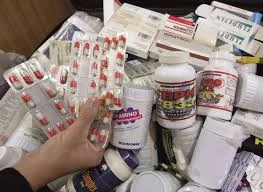Common Causes of Low Quality in Pharmaceuticals

Common Causes of Low Quality in Pharmaceuticals
Ensuring high-quality pharmaceuticals is crucial to patient safety, regulatory compliance, and brand reputation. Low-quality products can lead to therapeutic failure, adverse reactions, and recalls. The following are common causes of low quality in pharmaceuticals:
1. Poor Raw Material Quality
-
Impurities in APIs or excipients due to inadequate purification.
-
Suppliers not adhering to GMP.
-
Incorrect material specifications or inadequate CoA (Certificate of Analysis) verification.
2. Inadequate Manufacturing Practices
-
Poor equipment maintenance and calibration.
-
Cross-contamination between products.
-
Incorrect environmental controls (temperature, humidity, particulate matter).
-
Non-compliance with Standard Operating Procedures (SOPs).
3. Deficient Quality Control (QC)
-
Use of outdated or non-validated analytical methods.
-
Inadequate sampling plans leading to inaccurate quality evaluation.
-
Skipping stability studies or using incomplete data.
4. Human Errors
-
Improper weighing, mixing, or labeling.
-
Lack of proper training for operators.
-
Fatigue or negligence during critical manufacturing steps.
5. Inadequate Quality Assurance (QA) Oversight
-
Weak batch record review systems.
-
Failure to investigate deviations, OOS, or complaints thoroughly.
-
Poor documentation practices (“if it’s not documented, it didn’t happen”).
6. Ineffective Cleaning and Sanitation
-
Residual contamination from previous batches.
-
Use of unvalidated cleaning procedures.
-
Poor facility hygiene leading to microbial contamination.
7. Equipment and Technology Limitations
-
Outdated machinery incapable of meeting quality standards.
-
Lack of process automation and real-time monitoring systems.
8. Weak Supplier and Vendor Management
-
No regular supplier audits or performance reviews.
-
Over-reliance on a single supplier without quality checks.
9. Inadequate Stability and Storage Conditions
-
Exposure to light, humidity, or extreme temperatures during storage or transport.
-
Inadequate packaging leading to product degradation.
10. Regulatory Non-compliance
-
Failure to meet pharmacopeial specifications.
-
Ignoring updates in ICH, WHO, FDA, or EMA guidelines.
Prevention Measures
-
Implement robust GMP and GLP practices.
-
Conduct supplier qualification and audits.
-
Regular training and skill enhancement for staff.
-
Maintain preventive maintenance and calibration schedules.
-
Adopt QbD (Quality by Design) principles in formulation development.
-
Strengthen QA oversight and documentation practices.

